Even sans knowledge of ancient Mexico, a visit to one of the country’s primordial and sophisticated civilisations can be like a journey of discovery. Considered a national treasure, the pyramids, temples, ball-game courts, sacrificial sites and palaces capture an essence of the Maya, transferring their thoughts, ideals, philosophies and daily lives to modern minds. I visited several Maya sites and was richly rewarded with well-preserved archaeological ruins that inspired historical intrigue and curiosity. I believe a visit to Mexico is incomplete without stopping in one – or all – of these places to gain a deeper understanding of the region’s origins. Ergo, here are Mexico's top Maya ruins to visit, based on my personal experience.
Chichén Itzá
Iconic in the minds of those with a travel-lust for visiting the relics inherent to Maya civilisation, Chichén Itzá unearths the mystery while maintaining intrigue. One of Yucatan’s greatest archaeological sites, walking through the other-worldly ruins triggers curiosity even in those lacking a fervent desire to know every infinite detail. I was mesmerised by the architectural ingenuity, particularly of El Castillo (the pyramidal structure). The child within was unleashed as I walked by Chichen Itza’s templo de los guerreros. The Maya temple, constructed – as part of the complex - in the year 1200, is one of many significant monuments that comprise the ancient archaeological site. The lines of uncovered stone columns induced a desire to run aimlessly, hide, and peek around corners to scare the hordes of tourists traipsing through the site. It is the most famous and perhaps best restored of the Maya sites in the state of Yucatán. Understandably, then, Chichén Itzá has been classified as one of the new seven wonders of the world.
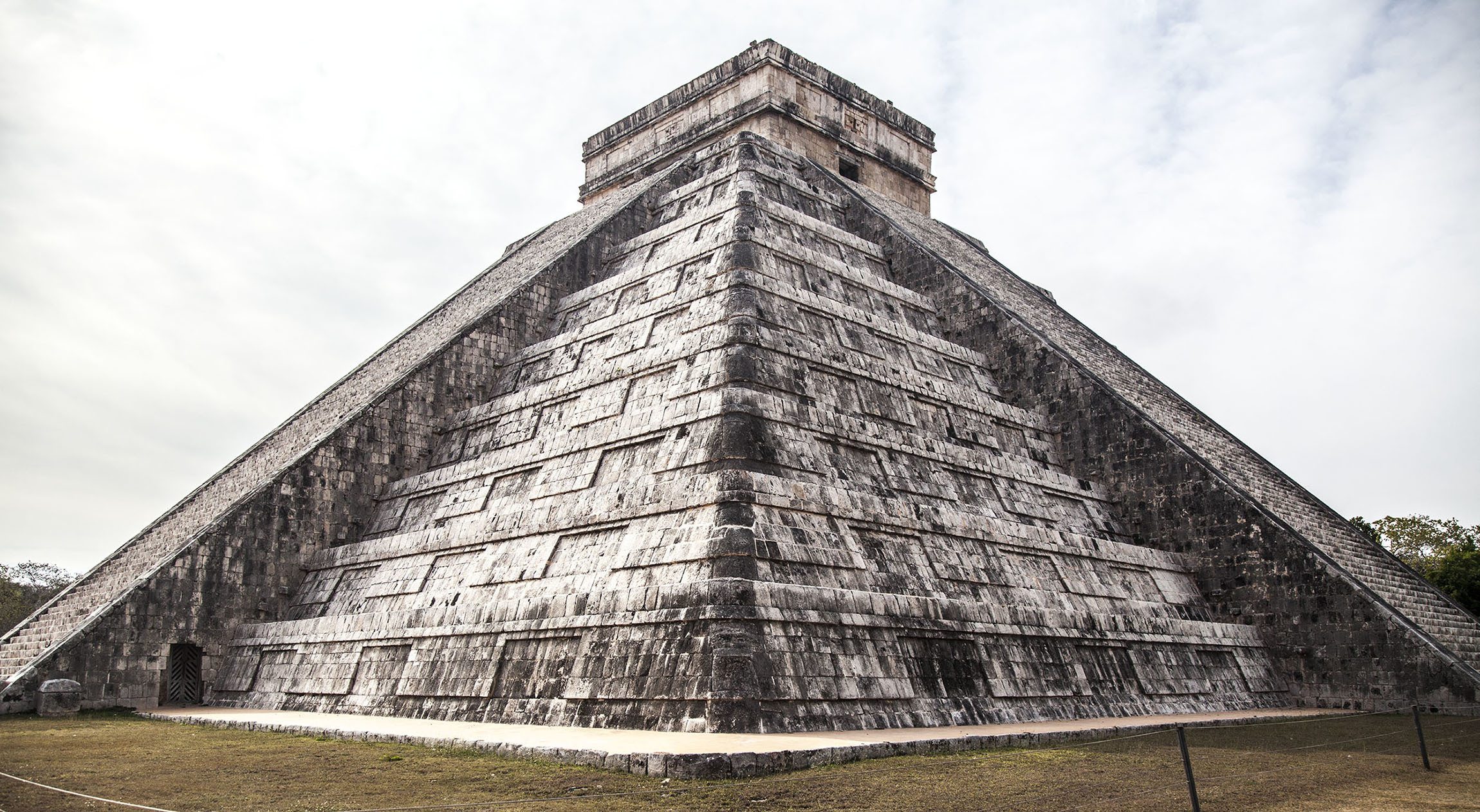
Highlights:
- El Castillo: As already mentioned, it is the pyramidal structure, the iconic feature central to most other Chichén Itzá structures. It’s unmissable (quite literally).
- Templo de Jaguares: known as the Temple of the Jaguars, the edifice showcases carvings of, you guessed it, Jaguars (and rattlesnakes).
- Templo de las Guerreros: the Temple of the Warriors is home to two hundred stacks and columns. Sadly, walking between the concrete structures is not permitted.
- Juego do Pelota Principal: the main ball court of Chichén Itzá’s eight, it is also where ball games were played.
- Tzompantli: perhaps the most confronting of all, The Temple of the Skulls displays those sacrificed to pagan gods.
- El Caracol: it is The Observatory, the place used by astronomers to record astronomical events like the equinox and solstice.



Advice to Visitors:
- Go early in the morning (ideally by opening time at eight am) to avoid the hordes (and by that, I mean thousands of human bodies) of tourists – and tour groups - who generally arrive by ten am. The heat and humidity can be brutal, so if early mornings are not your thing, visit as late as possible in the afternoon (by around three pm), allowing yourself a few hours in which to wander, before closing time at five pm.
Uxmal
Emerging out of the jungle, it is home to perhaps the most impressive (or so I heard) Maya archaeological ruins. I was hospitalised with pneumonia in Merida, so getting to Uxmal was sadly off the travel agenda. However, travellers I met who’d visited the site ranked it among the best they’d seen. Spreading over a large expanse in the hilly Puuc region, it bears high-level adornment, with exquisite geometrical mosaics mostly in good condition. As it’s not on the hot tourist trail of Yucatan, the Maya site is infrequently visited, leaving the ruins to you and your travel counterparts for the taking. Uxmal is, in essence, Mexico less travelled and may be the perfect recipe for those wishing to drift peacefully to another place: an ancient world.
Highlights:
- Adivino: known as the Pyramid of the Magician, it is steeped in folklore, believed to have been built overnight. Pay attention to the way it has been constructed. Compare it to the pyramids at the other sites.
- Nunnery Quadrangle: it was a government palace and exhibits some elaborate facades.
Advice to Visitors:
- Although competing for an iconic pose in front of a structure won’t be an issue, getting to the site south of Merida may require slightly more effort. There are buses from Merida that pass through Uxmal, services starting at six am every morning. Alternatively, inexpensive collectivos run to the site from Merida, but you’ll need to wait for them to fill up. The structures – particularly the pyramid – are peculiar, built in an unusual fashion. Don’t forget to bring a good camera.
Palenque
Dating to the seventh century, Palenque is another of Southern Mexico’s majestic Maya sites that lures even the least historically-inclined travellers to its maze of well-preserved structures and vine-covered crumbles. Of the major Maya sites in the country’s south, it was my personal favourite. Why? Part of the ancient city has been absorbed by a jungle of cedar, creating a Tomb Raider-esque adventure while traipsing the root-littered stone paths and mossy crumbles. It provided ample iconic and flattering Instagram-worthy photograph opportunities, but none greater than the pose sitting on top of the Grand Palace. Later, as I descended the steps leading to Palenque’s exit, I stumbled across a neglected section of the Maya ruin almost obscured from view: out of sight, but not yet out of mind. Stepping inside the jungle unlocked a fantasia: moss-covered stones littered the path leading to several disintegrating ancient structures, barely visible underneath the labyrinthine of tangled vines devouring them, trying to ensure eternal resting.
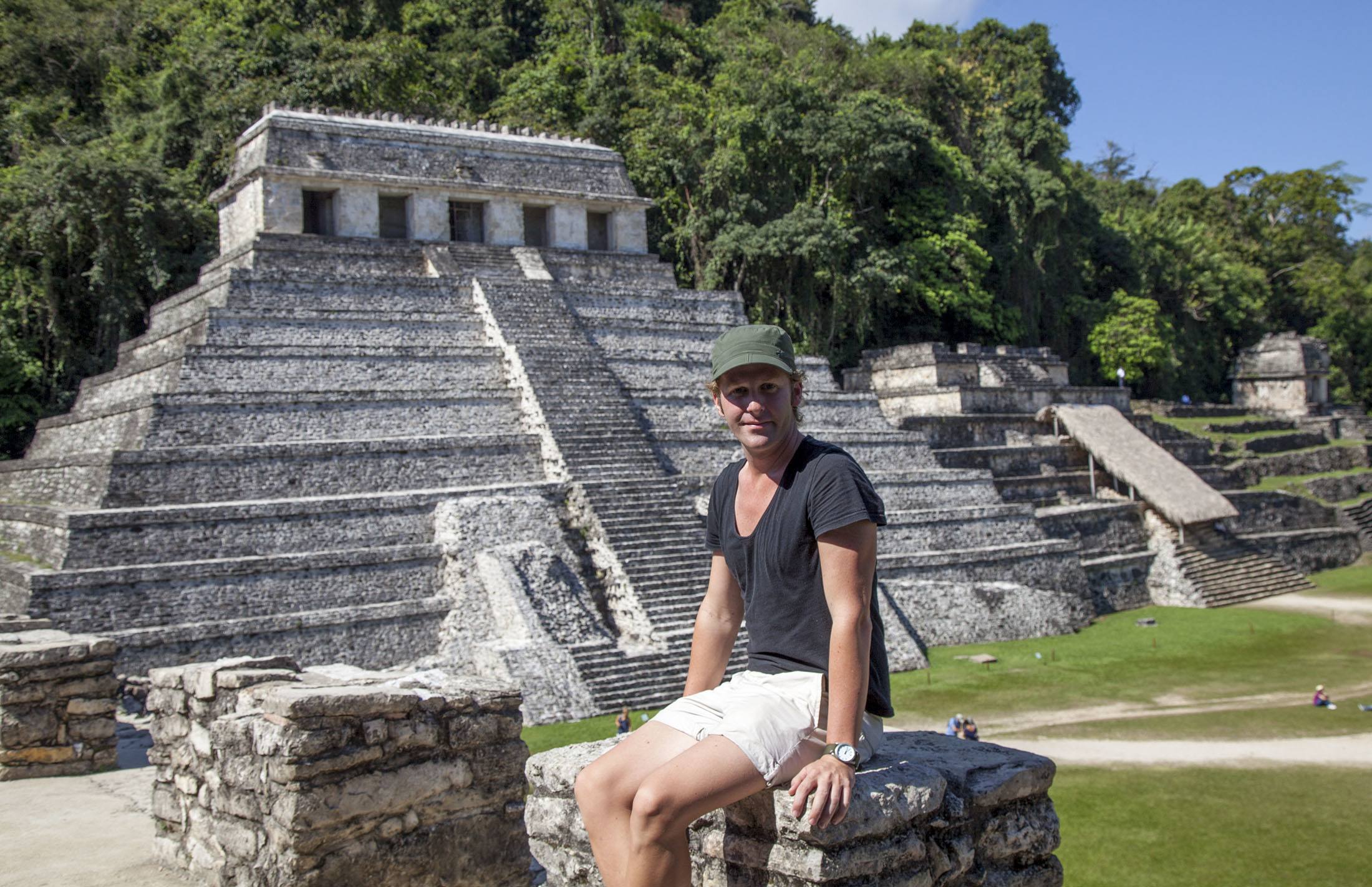
Highlights:
- Templo de los inscripciones: The Temple of the Inscriptions is the largest pyramid within the complex and was built as a funerary monument for Pakal.
- Il Palazzo: a complex of interconnected buildings and courtyards, The Palace houses some beautiful reliefs and carvings.
- Templo del Sol: of the temples within the complex, The Temple of the Sun has the most well-preserved roof-comb. There are links to this temple and the hallucinogenic mushrooms sold in the region. Ask a guide for details.
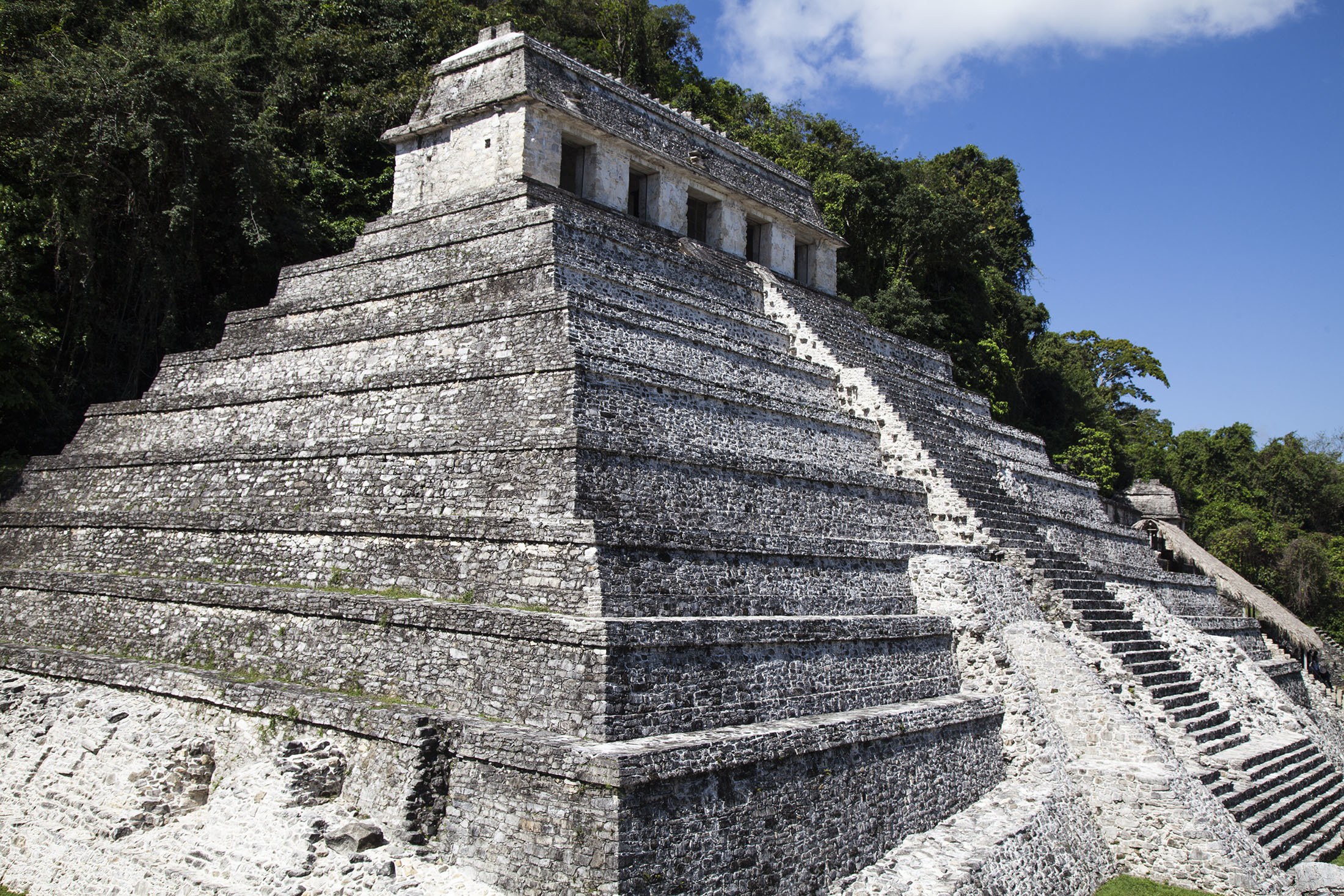
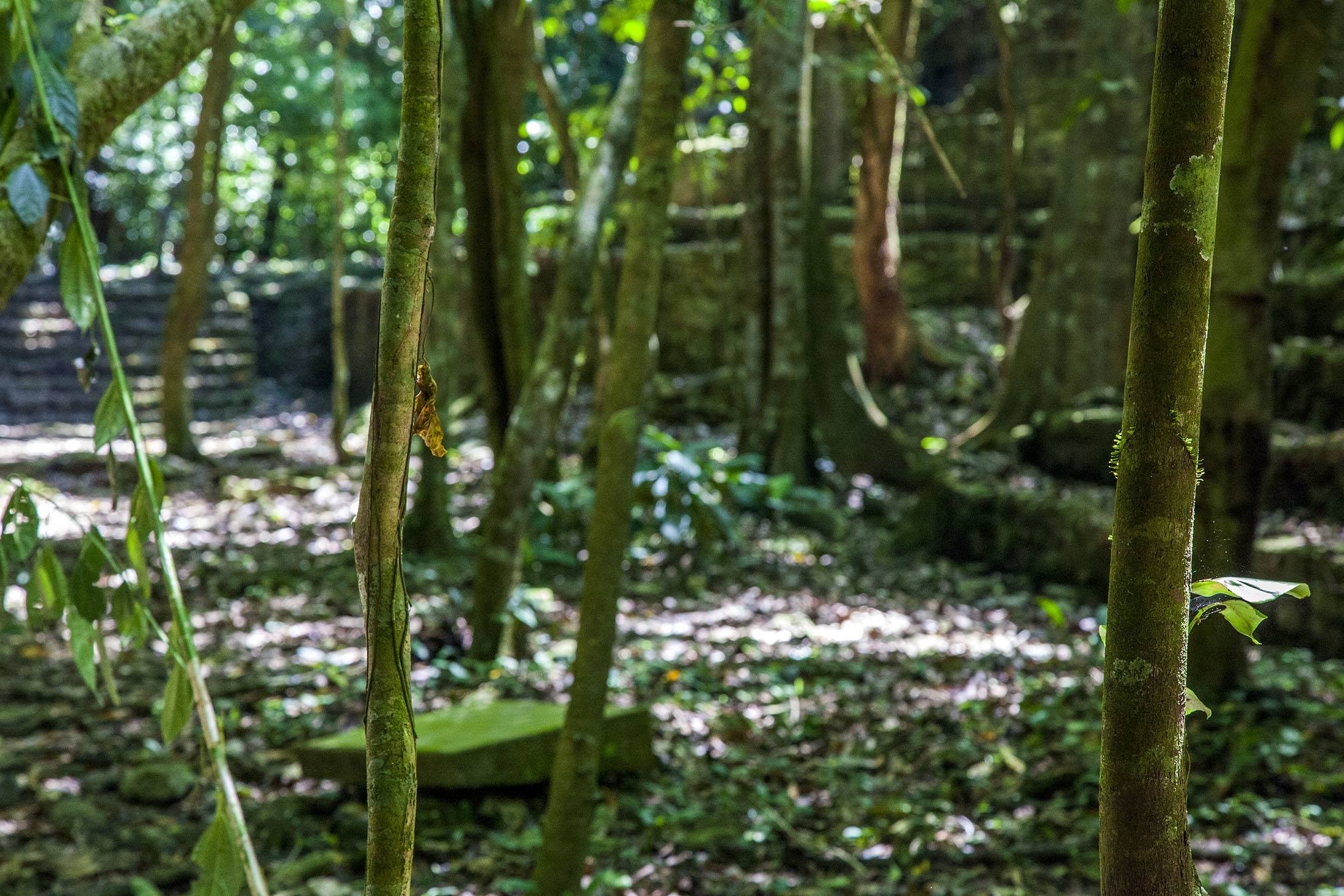
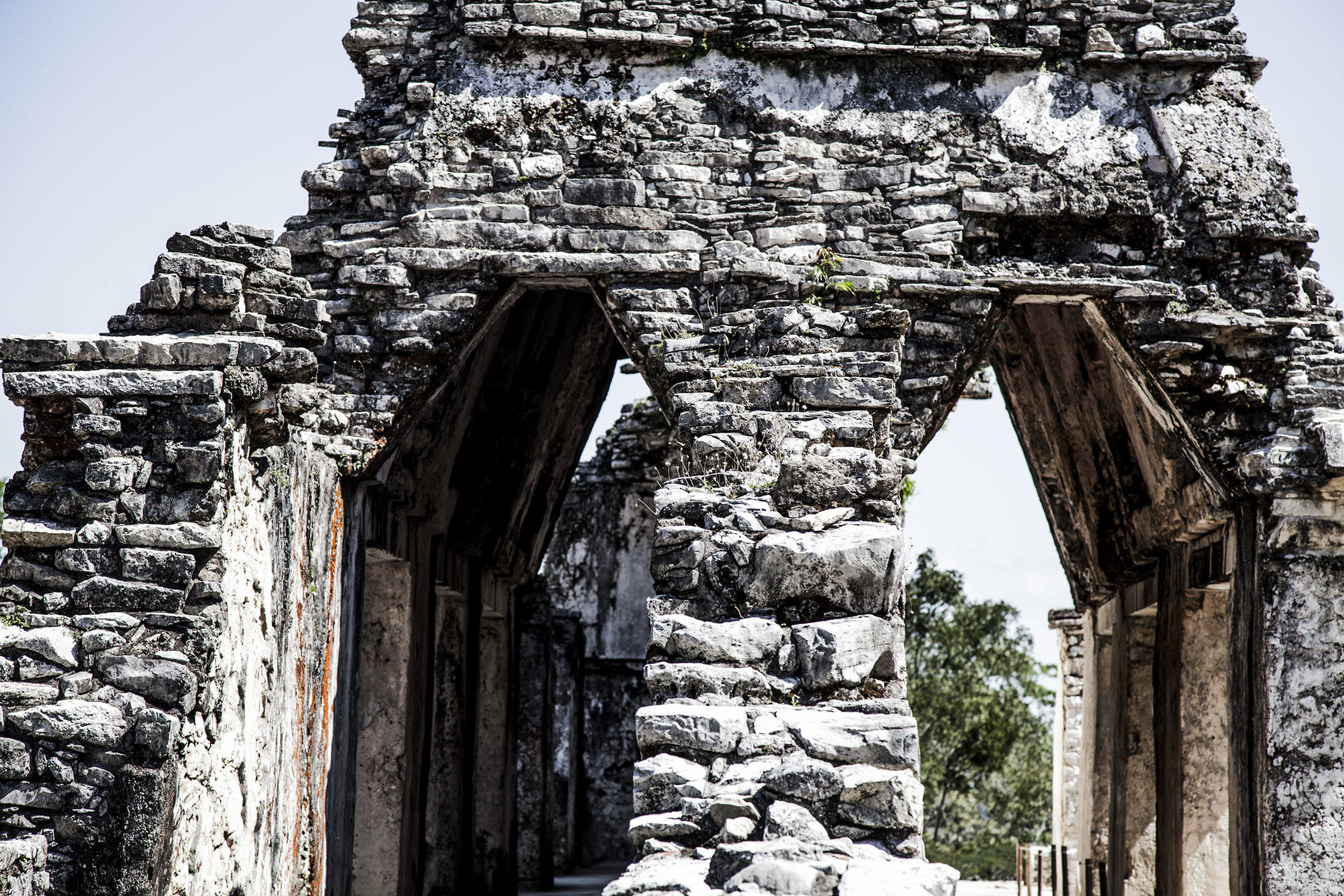
Advice to Visitors:
- Akin to its Yucatan counterpart Chichén Itzá, the ruins of Palenque are popular year-round, the grounds filling quickly one to two hours after opening. Go early, or late, to avoid the hordes traipsing every square inch of available earth and ruin. Getting to the site is easy: take a combi from Juárez in town. A ride all the way to the main upper ruins will set you back M$24 each way. Ensure you visit the ruins toward the exit on your way out, as they are often ignored by visitors but, for me, were the most interesting feature.
Tulum Ruins
Sitting above cliffs continually lashed by Caribbean waters, the archaeological ruins of Tulum preside charmingly over the rugged green-and-turquoise coastline. Compared to other Maya sites, Tulum’s structures are modest, designed and constructed during the late post-classic stage of Mesoamerican chronology. What it loses, however, in grandeur and ancient history, it wins in scenery. For imaginative visitors, the ruins are a life-size puzzle waiting to be pieced together, especially once passing through one of five doors in the wall, leading to a field of gently-rolling hills with projections that pepper the landscape.

Highlights:
- El Castillo: perched on the edge of a steep limestone cliff atop a cave, The Castle alludes to vertical ascension, from an underworld to higher planes. It also contains features with reference made to the Sun and Venus.
- Templo de los frescos: one of the best-preserved structures, the Temple of the Frescoes is home to a thrice divided mural, representative of death, life and the spirit world.
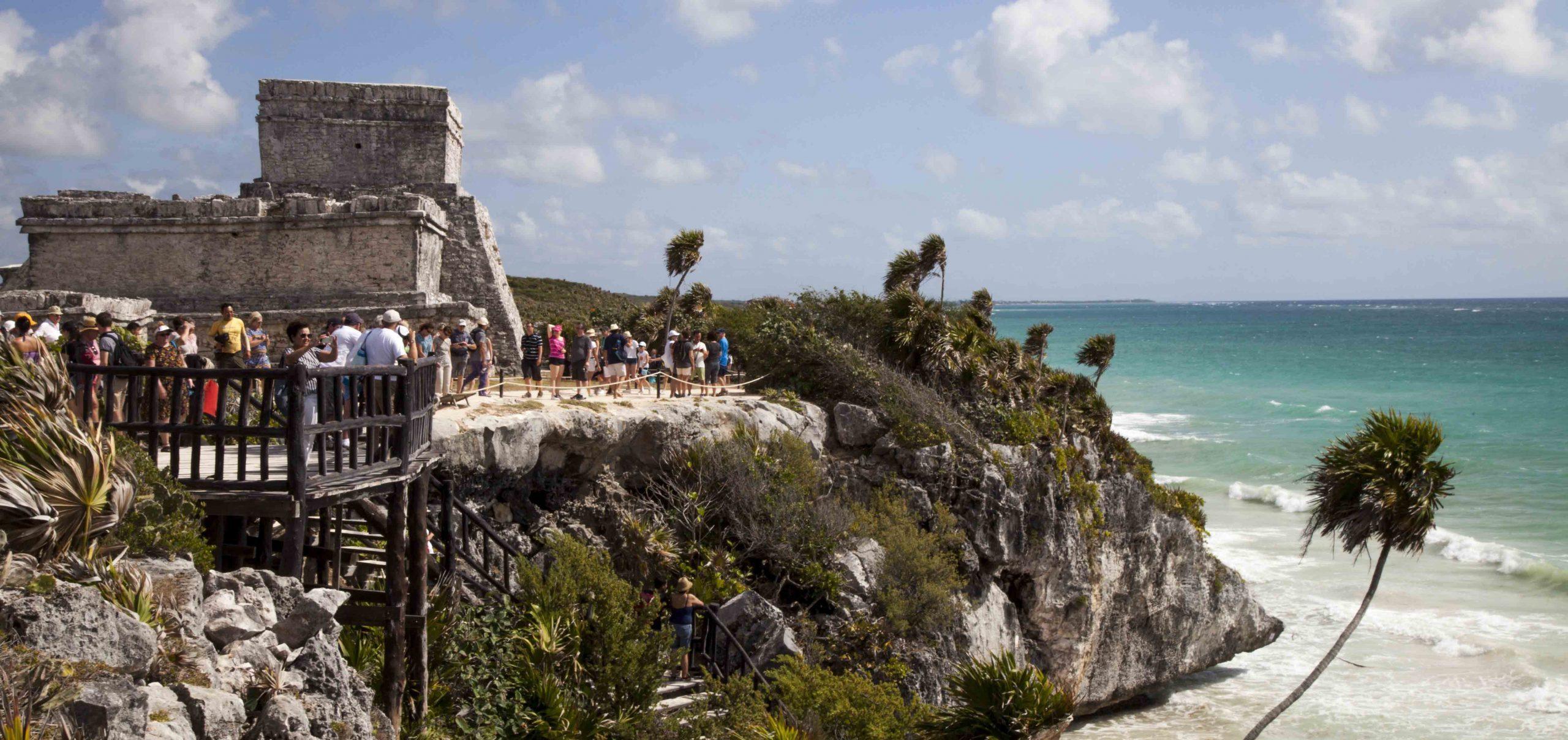

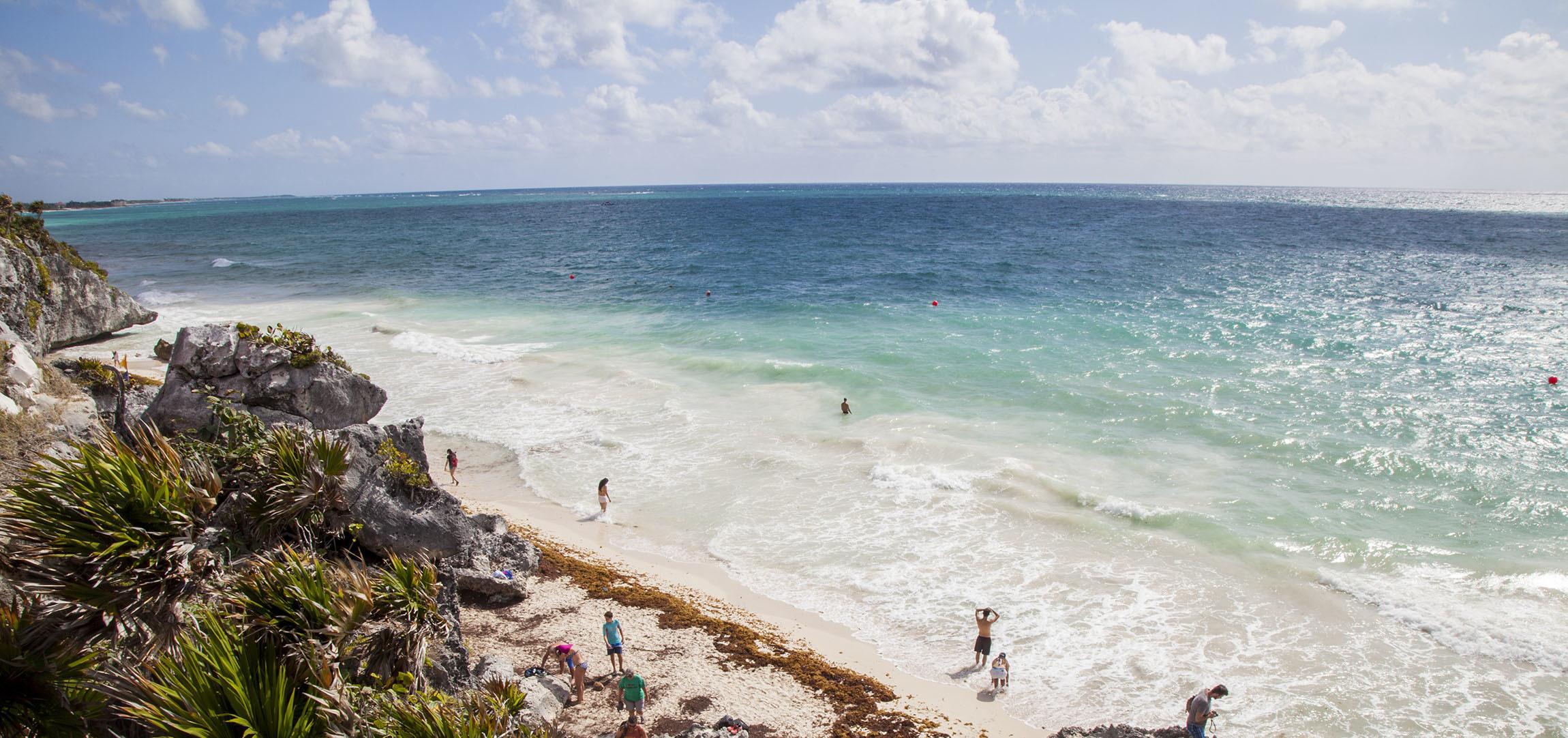
Advice to Visitors:
- I arrived later than anticipated and was disappointed by the magnitude of people moving through the site. It may sound repetitious but go early to ensure you’re not squashed and trampled by the masses of tourists moving through the modestly-sized ancient ruin. Take your swimwear, a towel, drinks and a snack, as the beach below the ruins (accessed by a wooden staircase attached to the cliff) although small, is ideal for passing a few hours in and out of Caribbean waters.
